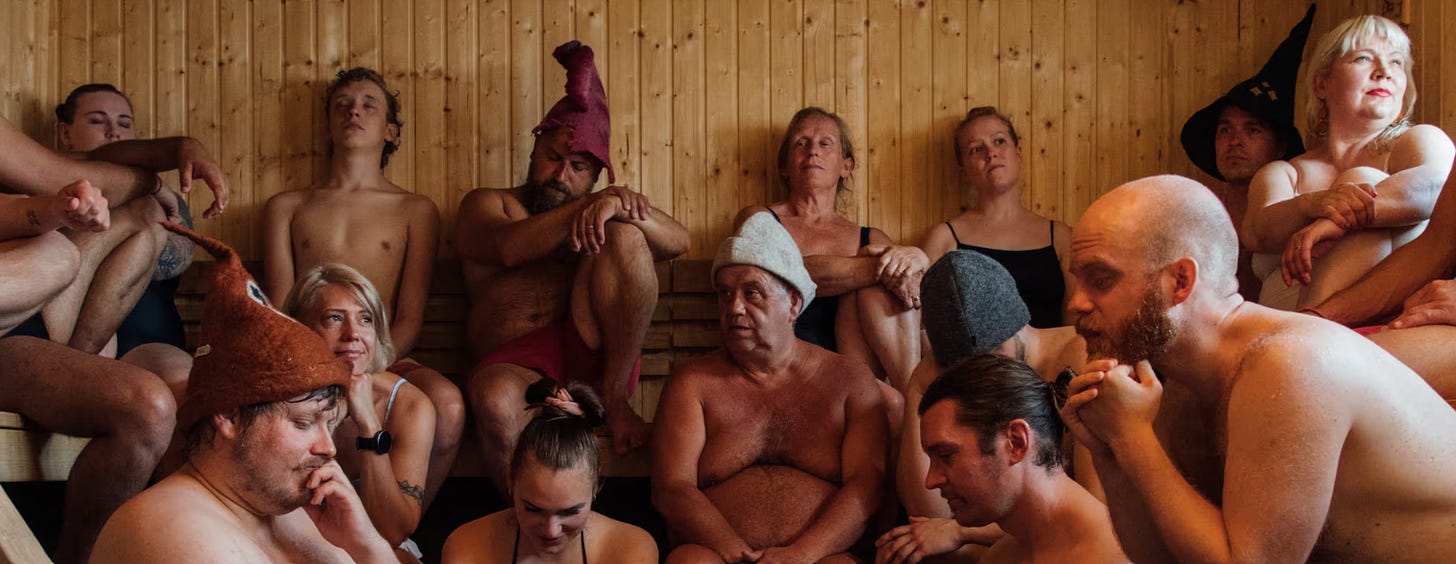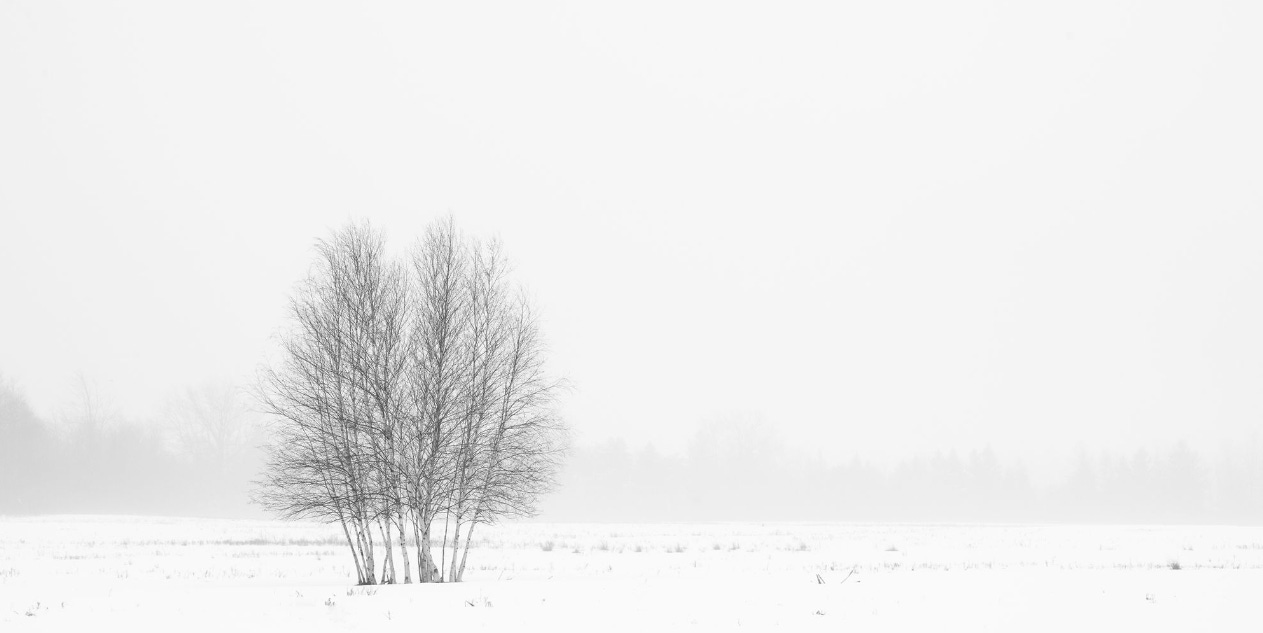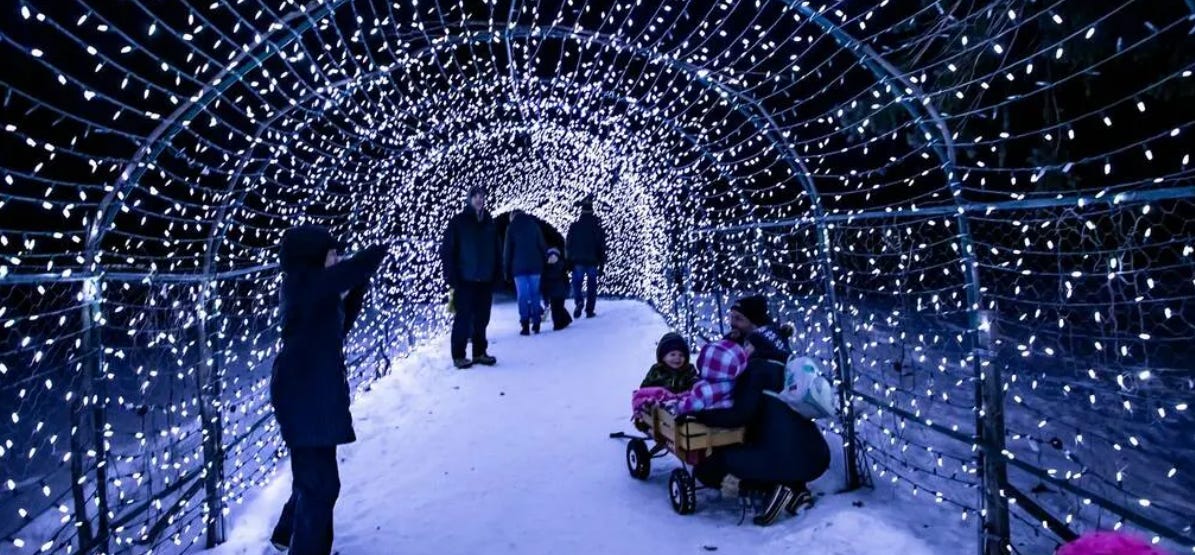Good morning,
A warm welcome to the dozens of new subscribers who joined us following last week’s post. Every other week, we share a (somewhat) thematic list of reads, research, and work related to connection and community.
With much of the U.S. experiencing a deep freeze, we decided to explore the theme of winter in this week’s curated list. Some of the questions raised this week include:
What can Finland’s sauna culture teach us about connection across difference?
What are the benefits of wintering and solitude?
What can cold-weather places do to facilitate connection in deep winter?
Pour a hot cup of coffee or tea, turn on some soft jazz, and enjoy this week’s wintry mix of reads. And, if you’re in a warm place right now, please disregard (though hopefully you still enjoy the reads!). Thanks as always for your consideration.
- Sam, Eric, + David
PS: We’ve already hosted about five interviews to get your feedback on the newsletter. If you’d like to connect with us and share your feedback too, please don’t hesitate to reach out!
The Reads
The Guardian - “The Sauna Secret: Why Finland is the Happiest Country in the World” by Miranda Bryant (Dec. 2023)
Saunas bring people together, intimately—and nowhere is this more true than in Finland. This piece chronicles the Finnish cultural ritual that is the sauna, exploring its history and current functioning as a cross-class social equalizer. The author posits that the ubiquity of the sauna is more than just an atmospheric necessity in a country with winters as long, cold, and dark as Finland’s. In fact, there’s something special about sauna culture—löyly, described as akin to the experience of an intense hug—that helps Finland routinely attain the top spot in global happiness rankings. Take a dip into this read - it’s refreshing.
“I don’t know any place in Helsinki or the whole of Finland where there are so many different people – young, old, students, foreign people, people from different socioeconomic backgrounds. When you’re in the sauna you don’t have your fancy clothes; we’re all just people in the sauna. That’s the best part.”
→ read the full article here. (+ thanks to one of our subscribers, Alvina, for sharing!)
The Research
Journal for the Theory of Social Behaviour - “Solitude: An Exploration of Benefits of Being Alone” by Long & Averill (March 2003)
Katherine May describes “wintering” as a fallow period when you’re more cut off from the world and compelled to slow down, rest, and retreat. Solitude—the positive state of being alone—is core to this experience of “wintering.” As many of us enter a period of “wintering” ourselves, we wanted to share Long & Averill’s academic exploration of the benefits of solitude.
1) Creativity often thrives in solitude. The authors describe how creativity involves “forming associations between previously unrelated ideas and giving expression to those associations in ways that are useful or valuable to the self or others.” We often need other people to facilitate ideation. But we also need time alone to connect these ideas together, make sense of them ourselves, and share them back with the outside world.
2) Intimacy with others is often enhanced by time spent alone. Philosophers and theologians have often described how their experience of solitude makes them feel more connected, and this has been confirmed by research in the social sciences. For example, Thomas Merton famously described his experience in downtown Louisville after emerging from his hermitage: “I was suddenly overwhelmed with the realization that I loved all these people, that they were mine and I theirs, that we could not be alien to one another even though we were total strangers.”
3) Spirituality is deeply connected to the experience of solitude. The authors point to the experience of monks living in monasteries and hermitages to become closer to God, tribal cultures that incorporate solitary quests for higher levels of consciousness as part of adolescents’ rites of passage, and Taoists who integrate solitude into their daily practices. Spirituality involves a sense of connection to something bigger than ourselves, and solitude deepens this intimacy and connection.
The Work
What can cold-weather cities and community groups do to facilitate gathering and connection in deep winter?
According to the Project for Public Spaces, “if people are given the chance to do something they enjoy doing, they will bundle up and go outside to do it, even when temperatures are below freezing.” Cities can activate their built environments with things like ice skating rinks and winter markets. Municipalities and local community groups can program engaging local traditions like snowman-building contests and winter carnivals. And, through initiatives like the Americorps Senior Companion Program, neighbors can provide support to local seniors who may face challenges leaving their homes during winter months. As the Finns have shown us, we can be both cold and connected during the winter months—even if we don’t have nearly as many saunas as people in our communities.







